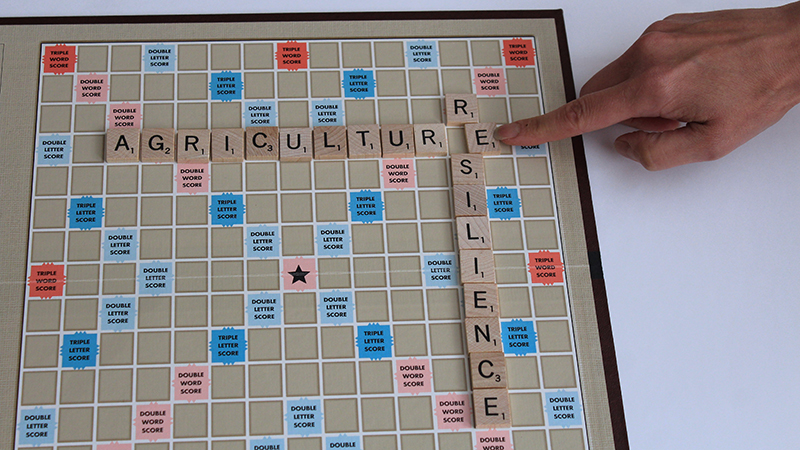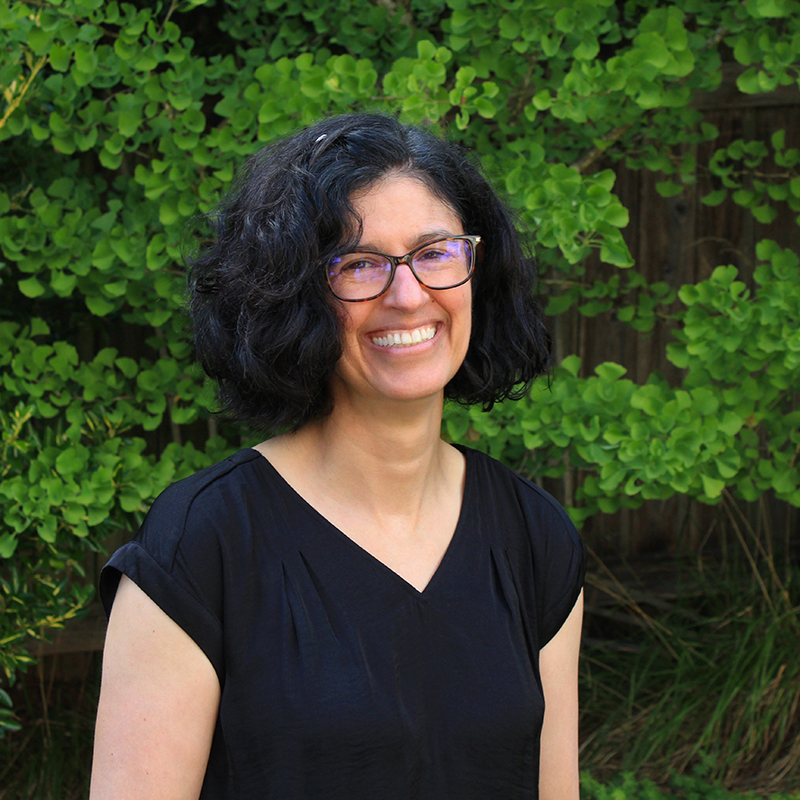Posted: 8/26/2025
SNR scientists defining ag resilience terms for national library

By Ronica Stromberg
Resilience has become a buzzword across fields, including agriculture. USDA strategic plans and documents advocate for it, but although the USDA's National Agricultural Library has a dictionary with more than 77,000 agricultural terms and concepts, resilience isn't one of them. Four University of Nebraska-Lincoln scientists and about 15 other scientists across North America are working to change that.
The scientists, who are all part of the Network for Integrated Agricultural Resilience Research begun at Nebraska in 2021, have spent the past year and a half diving deep into their linguistic skills to define agricultural resilience and about 30 related terms and concepts. Shana Sundstrom, the program coordinator for NIARR, has led the effort.
"I've been a resilience scientist for decades now, and I found it frustrating to see the confusion regarding terminology and conceptual meaning as resilience has proliferated across fields," Sundstrom said. "And so, I find the idea of creating a foundational terminology for agriculture to be extremely satisfying and, hopefully, extremely useful for other scientists that want to engage with these concepts and don't know where to start because the literature is vast."

Sundstrom and Craig Allen, the director of NIARR, along with Nebraska professors Tala Awada and Gwendŵr Meredith, came to the project with a background of looking at resilience concepts as defined in ecology. Using these same definitions in agricultural environments seldom works, Allen said.
Agricultural systems have much heavier human intervention than ecological systems. Many resilience terms as used in ecological systems contain the idea of self-organization. For example, grasslands and fire have historically interacted to stay grassland rather than switching to woodland. That idea is less appropriate in agriculture systems, Allen said.
When grassland switches to woodland, the change may be termed a regime shift. Allen and the NIARR scientists have been discussing what terms like regime shift would mean in agriculture.
"Of ideas that have relatively clear definitions in ecology but are squirrelier in agriculture, regime shift is one of them," Allen said. "I mean, is switching crops a regime shift? Or is it going from a cropping period to a noncropping land use? Or if you go from one row crop to another row crop is that a regime shift? Or is it row crop to something like citrus, a permanent agroforestry? So, there are some really basic questions like that."

Sundstrom said the challenging part of defining resilience terms for agriculture is that they were developed in the context of ecosystems. Agricultural systems are not simply ecological systems but social-ecological systems.
"We can't just think about crops, for example, or the biological component of an agricultural system," Sundstrom said. "It also has to account for the people. The system wouldn't exist if people did not make it so."
The effort of defining resilience terms in agriculture has drawn about 20 scientists from the larger NIARR network, which spans from Canada to Mexico. Sundstrom said the scientists have finished about three-quarters of the work and hope to finish this year. The plan then is to write a paper and offer the list of terms to the USDA to include in its online National Agricultural Library Thesaurus Concept Space.
Besides defining the terms, the scientists are giving examples and have worked with a graphic designer to create a graphic of an agroecosystem that illustrates where the terms fit in.
Each scientist has taken on at least one word to draft a definition of, and then the whole group discusses drafts at their monthly meeting. A single word’s definition can take the entire hour, or longer, to agree on. The process can be tedious but Sundstrom said the definitions are important so they are going slowly to get them right.
"By providing a definition, you provide a pathway for researching, observing, analyzing and understanding these systems as complex adaptive systems," she said. "It provides the structure and the language to do so."
Marie-Noelle Thivierge, a research scientist at the Quebec Research and Development Centre, has been working on the project since May 2022 and defining the terms agricultural diversity and spatial heterogeneity. She responded to reporter questions by email, indicating she had learned a lot by listening to others' perspectives on resilience.
"I now realize how much the context in which each of us works (climate, territory, economy, type of production, type of scientific research) affects our perception," she wrote. "The value of our group from very diversified contexts is that we try to rise above all these differences to find definitions that apply to all situations."
In her scientific work, she indicated she regularly presents to farmers and agronomists who are concerned about the future of their farms and ask many questions about resilience.
"The way I see it, the tool we are developing with the working group will help clarify the vocabulary and better explain the key concepts to stakeholders, who will then be able to translate them into concrete strategies to help farmers develop resilient agricultural systems,” she wrote.
Sundstrom said she and Allen will be the “sweeps” for the project, writing definitions for any terms not finished by others. She said she expects they will have about eight terms to define.
The group process has been slow, she said, because every time they think they are almost finished defining a word, the scientists think of other points and end up discussing the same word for the rest of the meeting.
"It's a strange but gratifying thing," she said. "It's because we apply these words, so something as simple as production stability that, on the surface, you think is utterly straightforward, and as soon as you get into the nuance of it, I mean, the devil is always in the details, and we're defining it from the perspective of resilience. So, what does production stability mean when your objective for the system is to be resilient? Well, gosh! It means something quite different than in other contexts, and it's fun to dissect that with scientists who have maybe spent decades researching production stability."
The work on defining resilience terms in agriculture is one part of the work of NIARR to research agricultural resilience and mitigate unfavorable regime shifts in agriculture. Funding to establish NIARR at the University of Nebraska–Lincoln came from the National Science Foundation. Networks included in it are the USDA-ARS Long-Term Agroecosystem Research Network, the Canadian Agroecosystem Living Labs Network, ResNet of Canada and the Resilience Alliance, an international network.